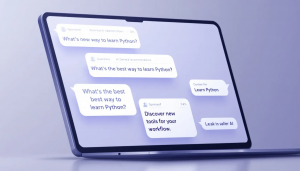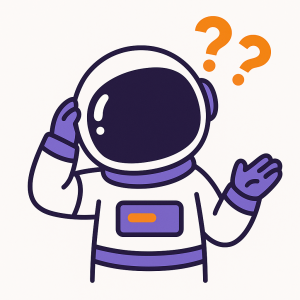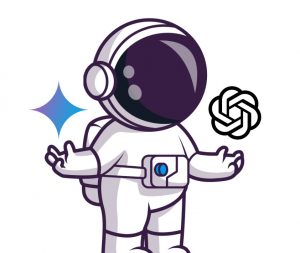Key-takeaways
Large language models such as ChatGPT, Perplexity AI, and Google Gemini are transforming digital advertising by weaving sponsored content directly into AI-generated responses. This is opening up new revenue streams beyond the usual subscription models.
Perplexity AI was the first to launch a major LLM advertising platform in November 2024, with CPM rates between £30 and £60. Meanwhile, OpenAI is actively recruiting advertising experts for ChatGPT’s anticipated launch in 2025.
Ads in LLMs don’t look like traditional banners or search results. Instead, they appear as sponsored questions, contextual suggestions, and native recommendations, offering a more engaging, conversational experience.
Early adopters stand to gain from less competition, lower costs, and the chance to establish themselves before these AI platforms fully mature and expand their ad offerings.
The rise of AI-powered search engines and answer engines presents unique opportunities for brands to connect with highly engaged, tech-savvy audiences through innovative ad formats.
What Are Ads in LLMs?
Ads in LLMs mark a big departure from traditional digital advertising. Instead of showing banner ads or clearly marked sponsored search results, large language models weave promotional content directly into their conversational replies and answer generation. AI generates these responses, including sponsored content, by producing answers that seamlessly incorporate advertisements without user control over the specific answers.
When users interact with an AI-powered search engine like Perplexity or ask ChatGPT for advice, they typically ask LLMs to answer questions and give advice. Sponsored content might pop up as follow-up questions, product suggestions, or contextual recommendations that feel natural within the chat, allowing users to access additional features or content through these interactions. This takes native advertising a step further by making ads part of the AI’s helpful response, rather than a separate promotional element. Learn how to optimise for AI search platforms like ChatGPT with practical tips to boost your brand’s visibility and conversions.

The main difference from traditional search engine advertising is how ads are delivered. While Google Ads appear as distinct sponsored results alongside organic listings, LLM advertising blends promotional content with the AI system’s organic replies. Users might see sponsored questions like “Would you like to explore job opportunities at Indeed?” after asking for career advice, or product recommendations from Whole Foods when discussing meal planning.
This native integration creates a more conversational ad experience but also raises important questions about transparency and user awareness. Most LLM search engines now clearly label ads with “Sponsored” or “Ad” tags to keep user trust and comply with advertising rules.
Major LLM Advertising Platforms
ChatGPT and OpenAI
OpenAI has been quietly building its advertising infrastructure throughout 2024, bringing in advertising veterans from Google, Meta, and X to develop ChatGPT‘s ad platform. With over 800 million weekly active users, ChatGPT offers the largest potential ad audience among AI platforms, outstripping many traditional social media networks.
Currently, OpenAI earns through its £20 monthly ChatGPT Plus subscription, but analysts predict that adding ads could boost revenue by 16.5 to 24.8 times. The ad platform is expected to launch in 2025, initially targeting free users while keeping paying subscribers’ experiences ad-free.
OpenAI is likely to focus on contextual ads within chat responses, similar to how it already uses custom instructions and multiple sources in its answers. Its vast user base of early adopters and professionals makes it especially attractive for B2B advertisers and premium consumer brands.
Perplexity AI
Perplexity AI became the first major LLM to roll out advertising in November 2024, introducing sponsored questions and branded content. Current advertisers include Indeed, PMG, and Whole Foods, with CPM rates between £30 and £60 per thousand impressions.
Perplexity’s “Buy with Pro” feature is a game-changer in AI-powered advertising, letting users buy products directly from search results without leaving the platform. This opens up new revenue streams beyond brand awareness, allowing businesses to track real conversion rates and sales.
Perplexity’s early success shows the potential of the LLM ad model. Its focus on answer engines and direct responses attracts highly engaged users actively seeking information, making them more open to relevant sponsored content.
Google Gemini and Other Players
Google’s Gemini AI ads aim to keep the tech giant’s advertising dominance as users shift to AI-powered search. While pricing and availability details are still scarce, Google’s vast ad network and agency partners give it a strong edge in scaling LLM advertising.
Microsoft Copilot is also developing its ad capabilities, leveraging integration with Microsoft’s business ecosystem and Office 365 users. Meta’s Llama models could offer ad opportunities across Meta’s platforms, though no specific LLM ad plans have been announced yet.
Other emerging players like Claude, DeepSeek, and more are expected to launch advertising features as they grow their user bases and look beyond subscriptions for sustainable revenue.
LLM Ad Formats and Placement
The ad formats for large language models differ a lot from traditional ad networks. Instead of banners or pre-roll videos, LLM ads focus on native integration that enhances, rather than interrupts, the user experience. Ads are often displayed alongside what users are searching for, making them highly relevant to the user’s intent.
Sponsored follow-up questions are the most common format right now. After the AI gives an initial answer, users might see extra questions like “Interested in similar job opportunities?” or “Want to explore related products?” These feel natural within the flow of conversation while clearly adding value for users and advertisers alike. Perplexity ads can also include video ads, giving brands a chance to engage users with multimedia content.
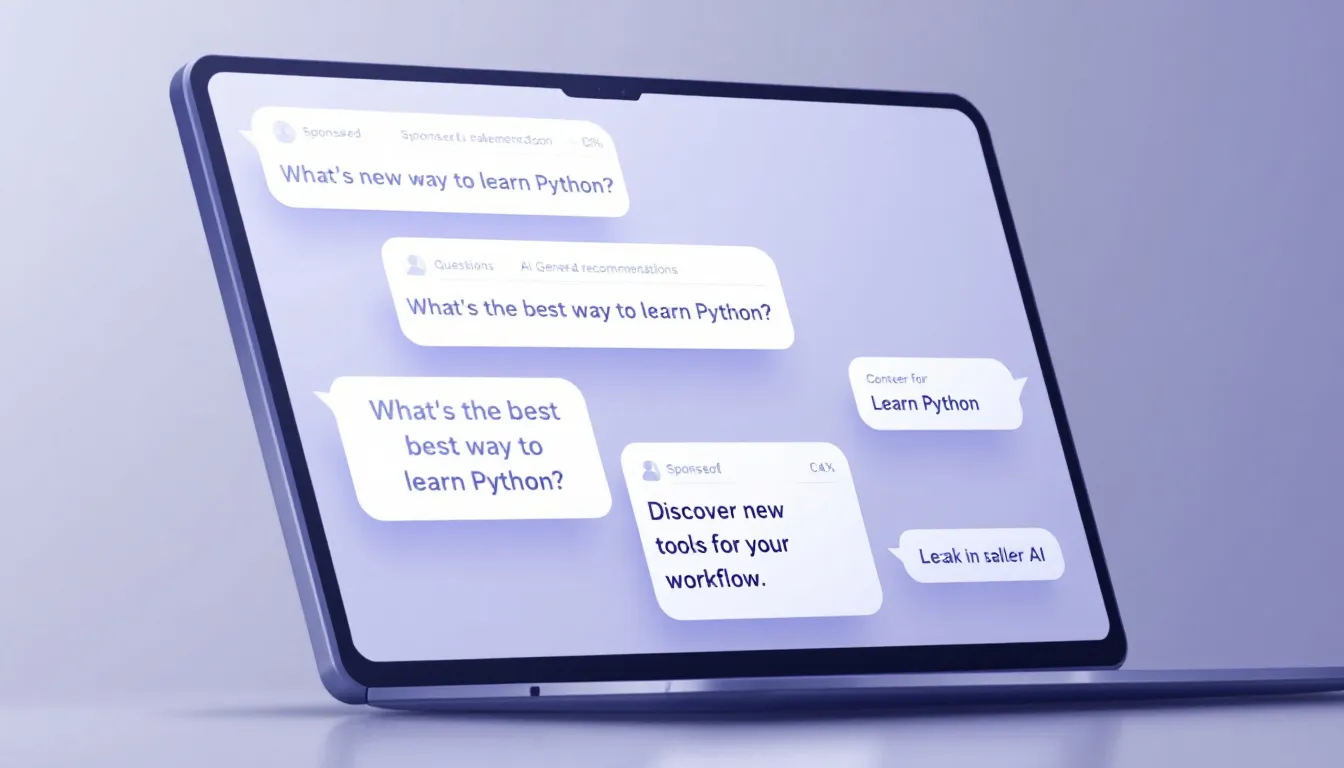
Contextual suggestions weave promotional content directly into AI replies. For example, when users ask about meal planning, the answer engine might mention products from Whole Foods or suggest recipes that subtly promote partner brands. This approach requires a careful balance to maintain trust while providing value to advertisers.
Product recommendations and “buy now” options allow seamless e-commerce within the LLM interface. Users can discover, research, and purchase without leaving the AI-powered search engine, creating smooth customer journeys that benefit both shoppers and businesses.
Video ads and multimedia are emerging as platforms develop richer interfaces, allowing brands to deliver immersive content while keeping the conversational feel that makes LLM advertising effective.
Clear labelling is vital across all formats. Platforms use tags like “Sponsored,” “Ad,” or “Partner Content” so users can easily distinguish promotional content from organic AI answers, helping maintain trust while enabling effective advertising.
Pricing Models and Costs
Most LLM ad platforms currently use cost-per-mille (CPM) pricing, with Perplexity setting the benchmark at £30 to £60 per thousand impressions. This reflects the premium, highly engaged, tech-savvy audiences who actively seek information via AI-powered search engines.
Though CPM costs seem high compared to traditional digital ads, LLM ads may deliver better ROI through higher engagement and conversion rates. Ads integrated natively into helpful AI responses cause less fatigue and hold user attention better than typical banner or display ads.
Early adopters enjoy lower prices and dedicated support as platforms compete for initial advertisers. ChatGPT and others are expected to start with CPM pricing, possibly evolving to cost-per-click (CPC) or cost-per-action (CPA) as measurement tools improve. The huge scale of platforms like ChatGPT may allow lower per-impression costs while reaching vast audiences.
Measuring ROI and ad performance is challenging. Traditional metrics like click-through rates may be less relevant in conversational settings, so new ways to track engagement, brand awareness, and conversions across the customer journey are needed.
Targeting and Audience Reach
LLM advertising relies on context-based targeting using user queries and conversation history. Unlike traditional demographic targeting, AI platforms analyse topics, intent, and context to deliver highly relevant sponsored content.
Current targeting focuses on query relevance and conversational context rather than detailed demographic data. This respects privacy concerns while still enabling effective targeting based on what users express and need right then.

Comparing audience sizes shows both opportunities and limits. ChatGPT’s 300+ million active users offer substantial reach, though that’s smaller than Google’s 4+ billion. Still, LLM audiences tend to be more engaged and higher-income, making them valuable for premium brands and B2B marketers.
Privacy rules and data limits reduce targeting precision compared to traditional platforms. But this can boost user trust while keeping ads effective.
Niche targeting emerges from specific LLM use cases. People using AI-powered search engines for complex questions, professional advice, or detailed research are highly valuable audiences for relevant businesses.
Ad Networks and Monetisation
Ad networks and monetisation strategies are at the heart of how large language model (LLM) platforms like Perplexity AI and ChatGPT are evolving. These AI-powered tools aren’t just changing how we search for information — they’re changing digital advertising itself. New business models and revenue streams are emerging fast.
Unlike traditional search engines that rely on banner ads and SEO, LLM platforms are introducing ads that feel like part of the conversation. Take Perplexity AI for example. Its ads show up as sponsored questions or embedded video content that blend in with the user’s experience. Instead of interrupting, these ads show up right when the user is actively looking for answers — making them more effective and far less annoying. This boosts brand awareness and conversion rates all while keeping the experience useful and relevant.
Monetisation on these platforms isn’t just about paid ads. We’re seeing a rise in subscription models where users can pay for premium features or an ad-free experience. ChatGPT already offers this with ChatGPT Plus. This dual model — monetising free users via ads and paid users via subscriptions — is a more sustainable revenue stream. It’s similar to what we’ve seen on YouTube or Spotify.
As AI search engines mature, they’re building smarter ad systems. Advertisers can now tap into machine learning algorithms and user data to optimise campaigns with more accuracy. For example, Perplexity’s merchant program allows brands like Whole Foods to show product suggestions as direct answers — blurring the line between helpful advice and advertising. These aren’t just ads. They’re AI-curated recommendations that show up exactly when the user needs them.
Joining these ad networks early gives you real advantages. LLM platforms give you access to highly engaged information-seeking audiences. Brands can use behavioural insights and feedback to refine targeting and messaging in ways that weren’t possible with traditional search ads. For early adopters, this means less competition, more visibility and the chance to shape how your brand shows up before the space gets saturated.
Looking ahead, expect a new wave of innovative ad formats: interactive video ads, custom instructions for branded experiences and multi-source answers that mix organic content with sponsored content. These formats will allow advertisers to engage users without disrupting the flow of conversation — creating more natural user-friendly ad experiences.Monetization of LLM platforms is good for everyone: advertisers get better targeting and engagement, businesses get new ways to grow and users get more useful content (if done right). Whether ads, subscriptions or partner programs, options for brands are growing fast. And as AI gets better, businesses will need to re-think their entire search marketing and digital strategy.
Challenges and Limitations
Current ad formats are limited compared to mature platforms, restricting creative options and campaign strategies. Most LLM ads are text-based, lacking the rich multimedia variety of established networks.
High upfront costs and uncertain ROI measurement deter smaller businesses and cautious advertisers. Premium prices may exclude budget-conscious marketers until competition grows and platforms mature.
Technical limitations and platform maturity can affect campaign reliability and optimisation. Emerging LLM ad platforms may have bugs, limited reporting, or fewer management tools compared to established alternatives.

Access is often restricted to invitation-only or partner programmes, limiting availability for most businesses. Larger advertisers and strategic partners get priority, making it harder for smaller firms to experiment with AI advertising.
Privacy concerns and data collection limits affect targeting precision compared to traditional platforms that use extensive behavioural data. While this may boost user trust, it can reduce effectiveness for campaigns relying on detailed demographic and behavioural targeting.
Industry Impact and Future Outlook
Revenue potential looks huge for platforms that nail LLM advertising. OpenAI’s possible 16.5 to 24.8 times revenue boost through ads shows how monetising large user bases with native ads could transform the market.
Major LLM platforms are expected to launch advertising between 2025 and 2026, with ChatGPT leading the way, followed by Google Gemini, Microsoft Copilot, and others. This timeline gives early adopters a chance to build advantages before markets saturate.
Hybrid models combining subscriptions and advertising will likely become the norm. The subscription model is emerging as a key revenue strategy for premium LLM services, offering an alternative to advertising-based monetisation. Free users will see sponsored content, while paying subscribers enjoy ad-free experiences, similar to Spotify, YouTube, and other digital services.
The rise of LLM ads could shift search engine advertising and market share substantially as users increasingly turn to answer engines for information. Google Ads will remain dominant for now, but LLM advertising may capture significant market share among tech-savvy users and specific niches.
AI-powered ad optimisation and automated ad creation will improve campaign effectiveness and reduce management headaches. Machine learning can optimise ad placement, timing, and creative content based on user responses and conversation context.
Getting Started with LLM Advertising
Availability and application processes vary widely among LLM ad platforms. Perplexity AI offers the easiest entry via its business partner programme, while ChatGPT ads are still in development, expected in 2025.
Businesses preparing for wider access should focus on conversational marketing principles and crafting content that genuinely helps within AI interactions. Creating authoritative, comprehensive content that LLMs naturally reference can boost visibility without paid ads.
Early campaigns should prioritise learning and brand awareness over immediate ROI due to premium pricing and measurement uncertainties.
Integrating LLM advertising with existing marketing strategies requires care to avoid conflicting messages or overlap. LLM ads work best alongside SEO, social media, and other channels, not as a full replacement.
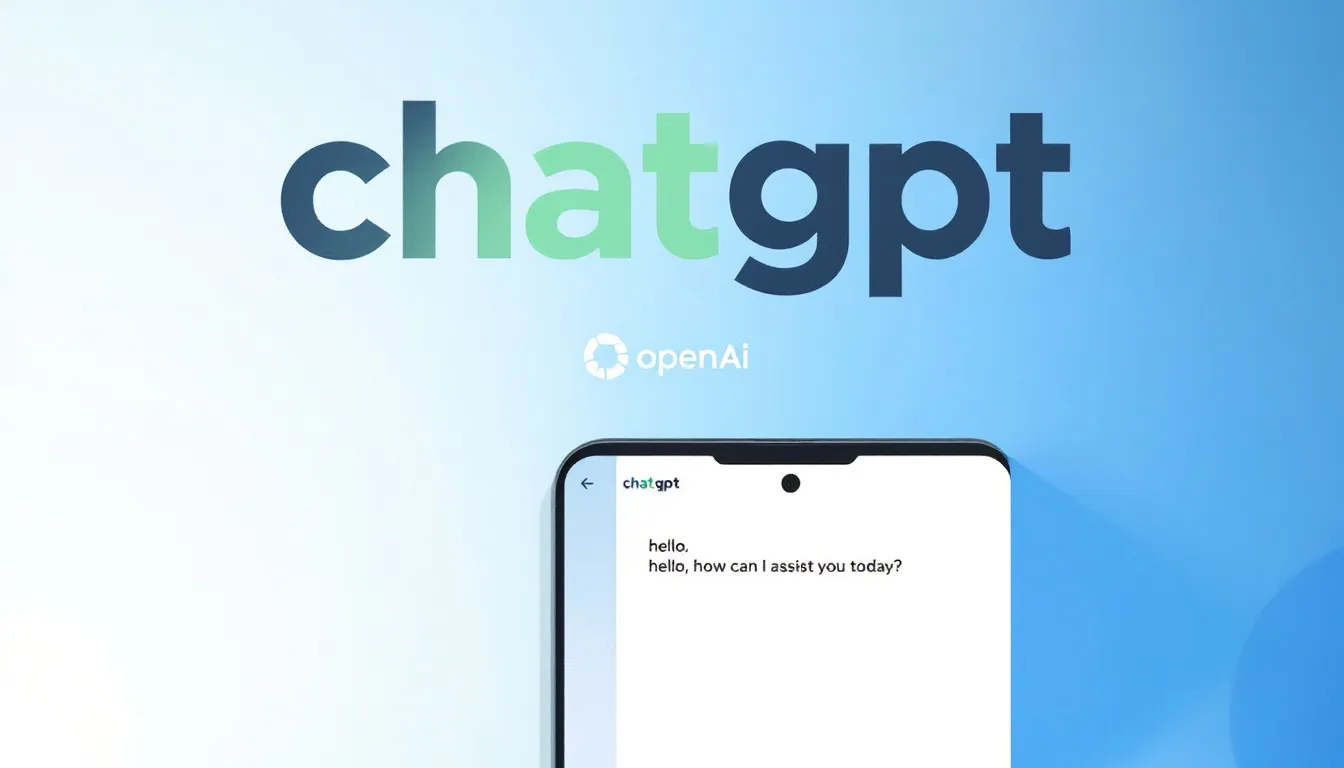
Start by identifying your target audience’s likelihood to use AI platforms and whether your products or services fit common LLM use cases. Companies serving tech-savvy professionals, complex product buyers, or educational content seekers may find early success with LLM ads.
Success metrics need adapting for conversational ads. Traditional click-through rates matter less than engagement time, follow-up question rates, brand sentiment, and downstream conversions.
Working with agency partners or merchant programmes can help businesses without in-house expertise or direct platform access navigate emerging LLM ad platforms and run effective campaigns.
The valuable data from LLM ad campaigns can inform wider marketing, customer service, and product development strategies beyond direct advertising benefits.
FAQ
When will ChatGPT advertising be available to all businesses?
OpenAI plans to launch ChatGPT ads in 2025, starting with larger advertisers and agency partners before expanding to smaller firms. The rollout will likely be gradual, similar to how Google and Facebook introduced their ad platforms. Stay tuned to OpenAI’s announcements and consider working with agency partners who may get early access.
How do LLM ads affect user experience and response quality?
When done well, LLM ads enhance user experience by providing relevant recommendations and helpful resources. Poor implementation risks harming trust and response quality if ads feel forced or irrelevant. Leading platforms invest heavily in clear labelling and ensuring sponsored content genuinely adds value.
What tools work best for tracking LLM ad performance?
Traditional metrics like click-through rates are less useful in conversational settings. Focus on engagement duration, follow-up question rates, brand sentiment, and downstream conversions. Custom attribution models and brand awareness surveys offer better insights until platforms develop more advanced measurement tools.
Can small businesses compete effectively on LLM ad platforms?
Though pricing and access currently favour larger advertisers, small businesses can succeed by focusing on specific niches and delivering highly relevant, valuable content. The conversational nature of LLM ads may actually benefit smaller firms that provide personalised, helpful interactions compared to generic promos from bigger players.
How do privacy regulations impact LLM ad targeting?
LLM ads rely more on immediate context and user intent than extensive behavioural tracking, which may improve compliance with privacy laws like GDPR and CCPA. This approach maintains effective targeting while respecting user privacy but requires different strategies than traditional demographic and behavioural targeting.








